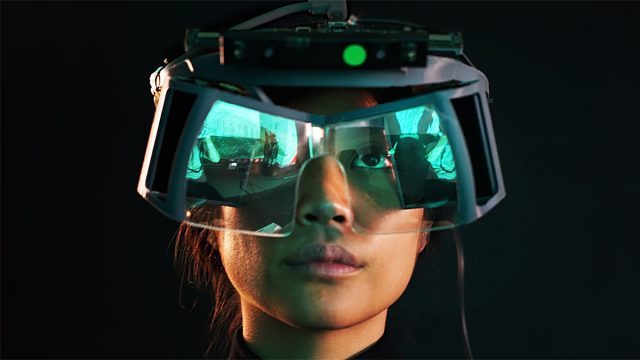According to a report from Business Insider, earlier this year Apple was on the verge of acquiring Leap Motion, but the deal fell through days before it was expected to close. According to the report, this is the second time in some six years that Apple had conversations with the company about an acquisition.
Founded in 2010, Leap Motion develops leading optical hand-tracking software. Though their first piece of hardware was designed for desktop input, the company pivoted into VR, and more recently the AR space, exploring how their hand-tracking tech can enable new and intuitive means of interacting with virtual and augmented information.
The company has raised $94 million over the course of its eight year history, according to Crunchbase, but hasn’t seen significant adoption of its technology. Although Leap Motion has been working on some very cool AR prototypes lately, a clear revenue stream to support its ongoing operations has not emerged.
According to a new report from Business Insider, citing anonymous Leap Motion employees and “people with intimate knowledge” of the company, in late Spring of 2018, acquisition talks with Apple were in the final stages, with the company offering $30–$50 million to buy Leap Motion, a fraction of the company’s reported peak valuation of $306 million at the time of its 2013 Series B investment.
Despite reaching a point where the companies were already sussing out details like employee benefits and offer letters, the deal fell through, the report claims. What’s more, this wasn’t the first time the companies were having serious talks about an acquisition; back in 2013 Apple met with the company to explore a deal but Leap Motion co-founder David Holz reportedly tanked that discussion when he told the company it wasn’t innovative, and went on to praise Android.
The report says that in both cases, the foiled deals were blamed on the company’s co-founders rather than its technical merit.
Responding to the report, Leap Motion told Business Insider that the company is “frequently solicited for acquisition by larger technology companies who realize the value of our team and the crucial role of our technology and research to the future of computing.”

In July of 2017, before the recent deal with Apple purportedly fell through, Leap Motion announced it had raised a $50 million Series C investment. This came as quite a surprise as the company’s previous investment was some four and a half years prior. It felt like crucial momentum.
But it may not have quite panned out that way. The Business Insider report claims that the $50 million Series C deal provided the company with $25 million up front, but that the other half wouldn’t come without hitting certain performance goals; the article says that those goals weren’t met and the second tranche was withheld.
In the months following the purported dissipation of the most recent Apple deal, Leap Motion has lost several key employees, including the company’s short lived Vice President of Design, Keiichi Matsuda, who had been with the company for just under a year. Matsuda’s departure was announced last week. The company also recently relocated its San Francisco office to cut costs, Business Insider reported.
Road to VR reached out to Leap Motion for comment on the Business Insider report but the company has not responded.
For years Leap Motion has been leading the optical hand-tracking space, and while controllers are preferred in many cases for highly interactive VR content, solid controller-free input seems like a great fit for more casual VR experiences like those seen on mobile headsets. Over the years we’ve been surprised to see no widespread integration of Leap Motion’s technology into any VR headsets.
Apple is believed to be working on its own AR headset. Over the course of several years the company has made several relevant acquisitions (like Vrvana, SMI, and most recently Akonia Holographics), has been bolstering its library of related patents, and has even begun to embrace VR on its platforms.







